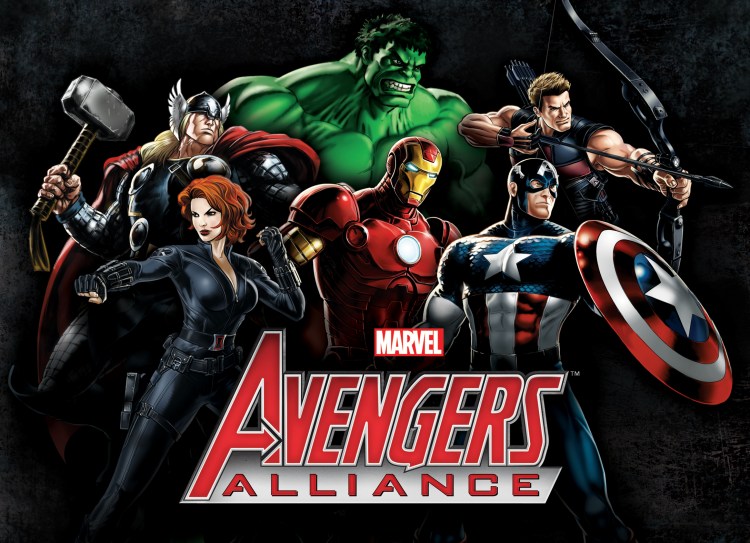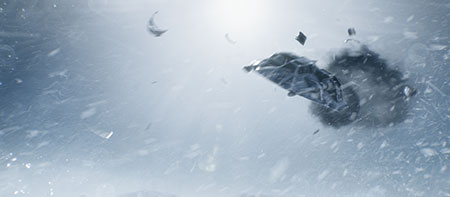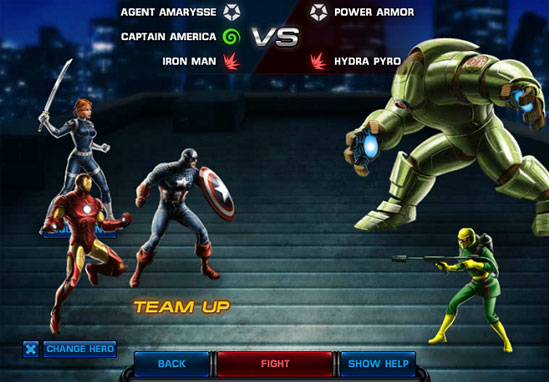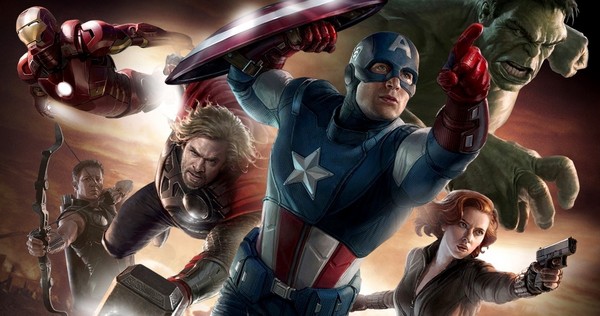The Walt Disney Company owns Mickey Mouse, Han Solo, and Iron Man. It has turned this wealth of brands into big time success in film, toys, and more — and it’s working on making that same leap with its game business.
Disney is finding its stride in gaming. It has five internal studios focused on mobile games making stuff like Where’s My Water, Star Wars: Commander, and Marvel Avengers Alliance. These are all successful properties, but success was not the word you would use to describe Disney gaming efforts for much of the last several years.
Now that that is changing, the company has a certain confidence in how it is approaching this sector, and that was evident when I sat down with Disney Mobile Games general manager Chris Heatherly at the Game Developers Conference in San Francisco earlier this month. He was preparing to host the first-ever Disney developers summit at the show (the company also has a new website for its partners), and it was obvious that he felt that his company is in a position of leadership. That’s important as mobile gaming grows into a $30 billion business worldwide, and the company’s piece of that market has already grown to a respectable size.
“We’re the No. 8 most downloaded publisher in the world on mobile,” Heatherly told GamesBeat. “We have about a million downloads a day and about 70 million monthly users in our network.”
With its performance on the rise and its growing sense of leadership, the company wanted used its summit to impart some wisdom to its fellow developers.
“We’ve been sending people to GDC for years to do business development meetings and stuff,” said Heatherly. “But we’ve never gotten up and really told our story.”
Mobile Game Developer?
Learn how successful developers acquire and retain the best users.
In the past, Heatherly has attended developer summits for other companies, but he got to a point where he realized Disney needed to do something similar. His reasoning for this? The House of Mouse is different from other publishers.
“I think what Disney brings to the games business is this idea of storytelling,” said Heatherly. “One of the things we constantly — I don’t want to say struggle with, but one of the things we constantly push for is quality and storytelling and not just taking our characters and putting them in a game and calling it done, but telling an authentic Disney-quality story with heart.”
With that goal in mind, Heatherly and Disney put together the plans for the panel. It featured Wreck-It Ralph creator Rich Moore and Brave co-director Mark Andrews. Big Hero 6 and Tangled producer Roy Connelly also participated. Heatherly also invited people from Lucasfilm and Marvel to speak.
“You’re not going to get this caliber of Disney talent together on a panel anywhere other than maybe Comic-Con,” said Heatherly. “It’s always been very transactional before. What we want to do here is be inspirational and tell the story in a cohesive way for them.”
Disney’s new plan for games
Beyond wanting to share the “story of Disney,” Heatherly also explained that his team has changed how it approaches gaming over the last couple of years. Instead of just blasting every idea against the wall, the publisher has whittled down its gaming efforts. It is now doing “four or five” games internally, all of which are for smartphones.
Cutting down like that manifested itself in March of last year in the form of layoffs, when more than 700 people lost their jobs. But the much leaner studio is now reaching outside to others for help.
“We’re broadening what we’re doing externally,” said Heatherly. “We’re going to probably do about 15-to-20 titles across our brands a year. It’s not going to be a huge slate. We want to focus on quality.”
Of those games, Disney plans to license about a third. That means outside companies will work with Disney and then publish the game. An example of this is Electronic Arts and its Star Wars games — one of which it plans to introduce to the world next month.
“When we talk about licensing, we have some pretty specific criteria,” said Heatherly. “It’s not just about minimum guarantees and things like that. What we’re looking for is top-quality developers, first and foremost, folks who have network reach that we don’t. A good example of that is Line.”
Disney is working with the chat-app company Line on Disney Tsum Tsum, which is a simple physics puzzler with cute characters. Line is massively successful in Japan, and that has helped propel the app into the top-downloaded and top-grossing charts worldwide, according to App Annie.
“It’s done $300 million in revenue, and it couldn’t have done that without Line’s social network,” said Heatherly. “That’s a great partnership for us because we’re able to reach into their social network with our IP.”
Disney also has a partnership with Kabam for the Marvel fighter Contest of Champions. It has Lego and Angry Birds tie-ins.
The other two-thirds of Disney’s games, the company will publish itself. Whether these are the aforementioned internally developed games or with outside partners.
This is the strategy the company is using now, and it has paid off. Heatherly called the company’s position in the market, with its 70 million downloads, a “good starting place.”
“We want to grow it,” he said. “We think it’s a very strong position. We think there’s a lot of opportunity to grow beyond where we are today.”
Building a co-development partnership
Getting the company to grow in terms of mobile revenues will require Disney to find the right external developers. Making the games inside Disney is something Heatherly can control. Working with established third-party partners like EA and Line is something that Disney is really making work right now. It’s those other five-to-seven co-developed games made by smaller teams that need Disney’s money that will make the difference.
“The co-developed stuff is, if you’re not familiar with the model, basically, we publish, the developer takes some risk, but they take a revenue share,” said Heatherly. “It really aligns our goals because especially in the free-to-play space, where what we’re doing is live-operated games that are driven by updates and continual maintenance and focus on the game, we want those partners to be invested for the long haul, not just building the game.”
Signing deals like this is key in the mobile market. Nearly all of the most lucrative games on mobile are run as a service: They are free to download and have tons of content, and the developers are constantly adding more stuff. You’re not buying a static, completed game because, ideally, the game is never finished.
So getting developers in a situation where they make more money if the game is making more money from things like in-app purchases, is important.
“That’s been successful for us,” said Heatherly. “Probably our best case there has been Frozen Freefall, which has done $80 million in revenue for us. It’s been very successful, continues to be an outperforming game, along with the Frozen franchise.
“We’ve done a Maleficent Freefall sequel. And now we have a third game in the series coming out, Cinderella Freefall. That’s a good example of co-development. The partner took some risk, but also participated in the revenue share. It’s been invested in the success of that series of games.”
Three models, one Disney
The way Disney approaches its game business isn’t revolutionary. Having a licensing business, internal games, and development partners is standard. But the Disney side of the equation is perhaps slightly abnormal compared to some other companies.
“What’s different is, we have one team,” said Heatherly. “And they work with partners to figure out what works best. Usually what you see is a publishing arm and a licensing arm. We don’t think of it that way. We want to do what’s right for the business and for the IP.”
This means that the same group of creative people at Disney are looking at every property and every idea and trying to figure out what is best for it. It doesn’t have a licensing team that is trying to nail down a licensing deal for every new Walt Disney blockbuster. It doesn’t have an internal team stretching itself thin trying to churn out some cash-in.
Instead, Disney wants to do whatever it takes to get the best game for any individual property or brand.
“Like Kingdom Hearts for example, with Square Enix,” he said. “We just can’t publish that title. They don’t work that way. If we want to work with them and have their IP in the game, work with them as a developer, it has to be licensed. Line doesn’t have third-party developers on their network. That works as a licensing relationship.”
If Disney was trying to be the publisher for everything with its characters in them, two of its most successful and popular games wouldn’t exist.
“The flexible business model gives us a very unique advantage in the gaming space,” said Heatherly. “We can own the customer relationship where it makes sense, but there are places where we can broaden the reach of our IP by licensing. We’re able to make those decisions based on what’s best situationally.”
In most situations, obviously, Disney would like to publisher its games on its own. It likes having a direct relationship with customers.
“We do it very well,” said Heatherly. “We think we have a strong publishing advantage. But there are certain cases where developers have better strengths in certain areas and licensing is a great option there. It’s what makes sense.”
Quality by focus
Part of the reason Disney was at GDC was the same reason it always comes: to make connections with potential new co-development partners.
Heatherly explained that working in licensing and co-development enables his company to quickly move from one idea to another. Gaming is always changing, and if the company had to consistently build teams for new sets of skills, that would drag down production. Outside partners eliminate that issue.
But the Disney gaming boss also admitted that it’s an advantage to keep a cap on the size of his teams.
“What we’ve learned is, trying to do too many internal things at a time doesn’t allow you to focus and get the quality you want,” he said. “Where we’ve stumbled in the past, it really had to do with doing too many things and not doing them well enough. Now that we have a much smaller internal slate, we can focus on the quality of those things.”
Modern game development requires teams that aren’t just great at making fun play mechanics, but teams that can build and maintain back-end Web infrastructures that run 24/7. You need tams that understand storytelling and art as well as marketing and analytics — and a million other things.
“If you’re weak at one of them, you’re not going to be successful,” said Heatherly. “We’ve just come to the realization that to make all those things mesh, we can only do that on so many projects at a time. That’s really the reason we’ve decided to focus internally. That’s working for us. The stuff you’re going to see from us in the next year is going to be a lot higher quality than some of the stuff we’ve put out in the past. That has a lot to do with the fact that we’re just really focused.”
Learning from Disney films
This idea of cutting down on quantity to bump up the level of quality is not limited to Disney games. It’s an idea the film side of the company has implemented to great success over the last several years. Heatherly wants to emulate that with his group.
“We’ve cut our film slate a ton,” said Heatherly. “We’re only doing somewhere in the vein of 8-to-12 movies a year. We’re not doing a ton of movies as a company, but the ones we’re putting out are very impactful. Every Disney movie coming out is trying to be a classic. And we’re delivering on that.”
Heatherly said he recently spent time with the leadership team in charge of Disney’s studio. He emphasized how important it was to everyone to make every movie as great as possible, and that it was only possible because of how the company has limited itself in other ways.
“In Hollywood for a long time the belief was that you have to make a lot of movies to get a hit,” he said. “We think the opposite way, which is that it’s not about making enough stuff and eventually you win the lottery. It’s about being good at the things you do. That will create the success. That’s worked for Disney studios. It’s working for us.”
And for Disney — movies or games — it comes back to storytelling. The company knows that’s why people show up to the theater for the latest Marvel release. And it knows that’s why they download the game apps on the way home. The company wants to keep working on that and expanding on it in ways that only games make possible.
“We’re in a business where, with systems and technology, we can literally connect our games together,” said Heatherly. “We’ve learned a lot from the way [Marvel] is thinking about story with the Cinematic Universe, and the way they’re thinking long-term about their slate, as opposed to individual movies that stand on their own.”
In his talks with developers, that’s the kind of stuff Heatherly wants to get across. Disney cares about storytelling. It cares about quality. It wants to make every game great.
“In my talk [at GDC], I speak up front about a quote from [Disney chief creative officer] John Lasseter, which is that quality is the best business plan,” said Heatherly. “That’s my message to the developers.”
VentureBeat's mission is to be a digital town square for technical decision-makers to gain knowledge about transformative enterprise technology and transact. Learn More






